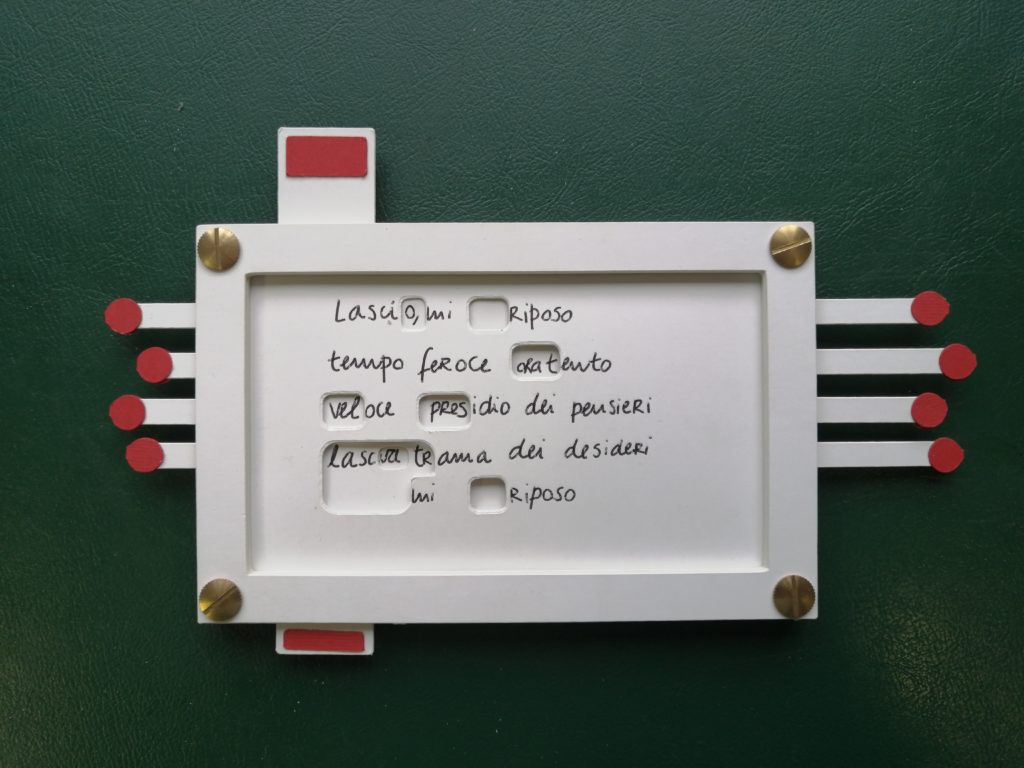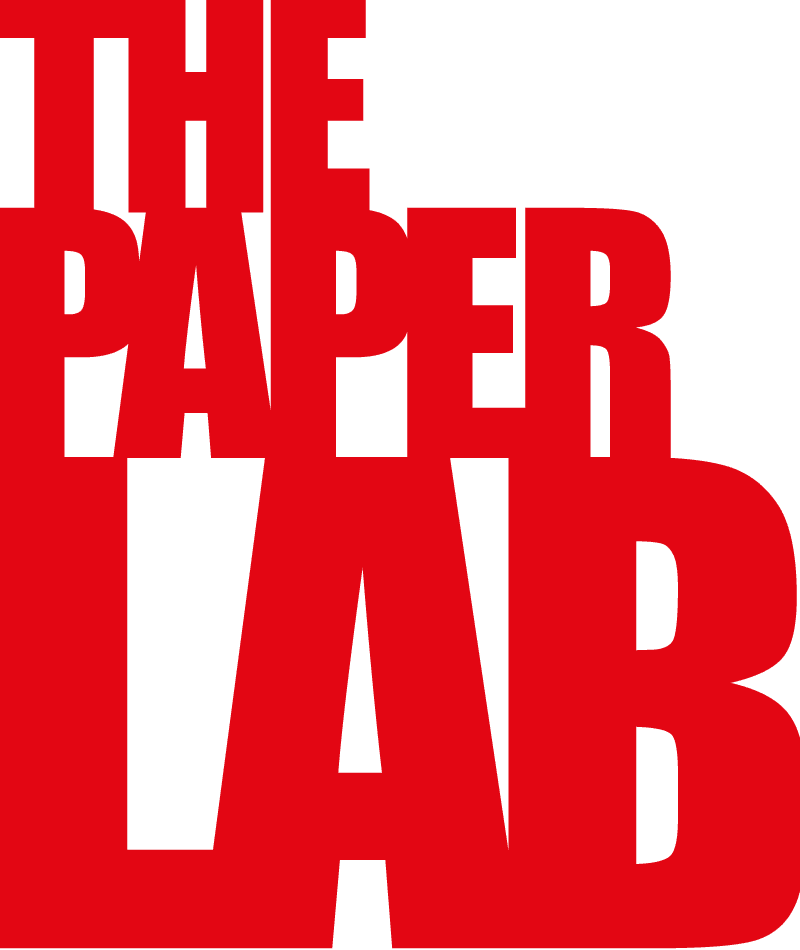Continua il discorso tra Daniela Calisi, autrice di Change e Rachele Cataldo, esperta di data visualization con cui condivide l’amore per l’interactive art.
Riguardo alla resa fisica su un meccanismo di legno.
Sul legno, in particolare, c’è stata una mia riflessione sul rapporto che avevo con i materiali e con i metodi di produzione. Io ho conosciuto il legno a valle di 10 anni di produzione digitale, quindi è stato un impatto con il materico che ha delle ripercussioni psicologiche fortissime su di me, perché il materico ha degli tempi specifici, degli impegni, delle altre esigenze e carichi mentali.
Il digitale ha un carico mentale molto più di astrazione, dove scrivi usando un codice di scripting. Sul materico bisogna metterci le mani sopra e ha dei tempi di produzione e preparazione diversi, un diverso rapporto con l’errore perché con il digitale fai-cancelli-fai-cancelli senza nessun problema; sul legno non puoi fare trial and error, bisogna progettare con molta più attenzione quello che andrai a realizzare sulla materia. Se devi fare un buco non puoi usare “ctrl+z” e ricominciare da capo, non puoi salvare il file.
Dopo il primo esperimento su legno, che è stato quello completamente artigianale, ho sentito il bisogno di trovare una via di mezzo tra il digitale e il fisico. Quindi una delle fasi di quest’ opera è passata per una macchina laser in cui io ho digitalizzato il prototipo cartaceo che avevo fatto a mano, l’ho ritoccato sui disegni vettoriali e ho potuto di nuovo riavere tutta la comodità del digitale per fare i miei trial and error. Ho fatto quello che mi serviva in digitale e poi sono passata attraverso una macchina a controllo numerico che ha tagliato nel legno quello che io avevo disegnato in vettoriale.
Il risultato non mi soddisfaceva a pieno perché l’esperienza completamente artigianale mi aveva dato cose che quella versione uscita dal laser cut non mi dava. Ero fisicamente poco legata al progetto che avevo prodotto.
Nonostante fossi molto soddisfatta dal punto di vista della forma, ero poco soddisfatta della resa materica, la trovavo nuda, un po’ fredda e quindi ho aggiunto un passaggio artigianale nella poesia di legno: ho fatto un passaggio di colorazione, ho aggiunto dei meccanismi fatti a mano da me, per poi ricreare la tessa meccanica in miniatura ma totalmente artigianale. L’ho miniaturizzata, che era una delle cose che volevo fare.
In questa versione più piccola ho aggiunto uno strato di manipolazione umana sul prodotto di una macchina, creato da un disegno digitale partendo da un prototipo cartaceo.
Il concetto di stratificazione parte nella scrittura e continua nel processo produttivo, finché anche il prodotto finale è l’esito di tante stratificazioni, ma è anche un ulteriore stratificazione perché hai voluto aggiungere la fase artigianale. È questo l’ultimo tocco?
Non sempre. Per me l’opera inizia 20 anni fa e finirà non so quando: l’opera è questo processo. L’oggetto è una delle manifestazioni fisiche del mio processo. Direi che in realtà è un’opera-processo.
Vedremo sempre tutte queste manifestazioni o soltanto una?
Soltanto una che è l’ultima versione. Magari la documentazione sarà sempre presente ma solo una sarà presente fisicamente.

Vérsion Française
On continue le discours entre Daniela Calisi, autrice de Change et Rachele Cataldo, experte de data vizualization avec laquelle elle partage l’amour pour l’interactive art.
Parlons du rendement physique sur un mécanisme en bois.
Sur le bois, en particulier, il y a eu une réflexion sur la relation que j’avais avec les matériaux et les méthodes de production. J’ai connu le bois en aval de 10 ans de production digitale, un impact avec le matériel qui a des répercussions psychologiques très fortes sur moi, parce que le matériel a des temps spécifiques, des engagements, des autres exigences et des charges mentales.
Le digital a une grande charge mentale en ce qui concerne l’abstraction, où vous écrivez en utilisant un code de scripting. Sur le matériel il faut y travailler beaucoup et il a des temps de production et de préparation différents, un rapport différent avec l’erreur parce qu’avec le digital Vous “faisez-annulez-faisez-annulez” sans aucun problème; sur le bois vous ne pouvez pas faire des trial et des erreurs, vous devez avoir plus d’attention pour ce que vous allez réaliser sur la matière. Si vous devez faire un trou, vous ne pouvez pas utiliser “ctrl+z” et recommencer à zéro, vous ne pouvez pas enregistrer le fichier.
Après la première expérience sur le bois, qui a été complètement artisanale, j’ai senti le besoin de trouver un juste milieu entre le digital et le physique. Donc une des phases de cette oeuvre est passée par une machine laser dans laquelle j’ai digitalisé le prototype fait de papier que j’avais fait à la main, je l’ai retouché sur les dessins vectoriels et j’ai pu de nouveau récupérer tout le confort du digital pour faire mes trial et erreurs. J’ai fait ce qu’il me fallait en digital, puis je suis passée par une machine à commande numérique qui a coupé dans le bois ce que j’avais dessiné en vectoriel.
Le résultat ne me satisfaisait pas pleinement parce que l’expérience entièrement artisanale m’avait donné des choses que cette version avec le laser cut ne me donnait pas. J’étais physiquement peu attachée au projet que j’avais produit. Bien que j’étais très satisfaite du point de vue de la forme, j’étais peu satisfaite du rendu matériel, je la trouvais nue, un peu froide et j’ai donc ajouté un passage artisanal dans la poésie de bois : j’ai fait un passage de coloration, J’ai ajouté des mécanismes faits à la main par moi-même, pour ensuite recréer la texture mécanique miniature mais totalement artisanale. Je l’ai miniaturisée, c’était l’une des choses que je voulais faire.
Dans cette version plus petite, j’ai ajouté une couche de manipulation humaine sur le produit d’une machine, crée à partir d’un dessin digital à partir d’un prototype fait de papier.
Le concept de stratification part dans l’écriture et continue dans le processus de production, tant que le produit final est le résultat de nombreuses stratifications, mais c’est aussi une stratification supplémentaire parce que vous avez voulu ajouter la phase artisanale. C’est ça la dernière touche?
Pas toujours. Pour moi, l’œuvre commence il y a 20 ans et finira je ne sais quand : l’œuvre même est ce processus. L’objet est l’une des manifestations physiques de mon processus. Je dirais que c’est en fait un travail-processus.
Verrons-nous toujours toutes ces manifestations ou seulement une?
Une seule qui est la dernière version. Peut-être la documentation sera-t-elle toujours présente mais une seule sera présente physiquement.
English version.
The conversation between Daniela Calisi, author of Change, and Rachele Cataldo, a data visualisation expert with whom she shares a passion of interactive art, continues.
THE FOLDING FAN GALAXY VOL.6 :Status transitions
Regarding physical performance on a wooden mechanism.
With wood, in particular, I reflected on my relationship with materials and production methods. I became acquainted with wood after 10 years of digital production, so the impact of the material had a very strong psychological repercussions on me, because the material has specific times, commitments, and other needs and mental loads.
Digital has a much greater mental load of abstraction, where you write using a scripting code. You have to put your hands on the material elment and it has different production and preparation times. There is also a different relationship with errors because with digital you can erase-make-delete-make-delete without any problem; with wood you can’t do trial and error, you have to plan much more carefully what you are going to do with the material. If you have to make a hole, you can’t use “ctrl+z” and start over, you can’t save the file.
After the first experiment on wood, which was completely handmade, I felt the need to find a middle way between the digital and the physical. So one of the phases of this work went through a laser machine in which I digitised the paper prototype I had made by hand, retouched it on the vector drawings and could again have all the convenience of digital to do my trial and error. I did what I needed digitally and then went through a numerically controlled machine that cut into the wood what I had drawn in vector.
I was not fully satisfied with the result because the completely handmade experience had given me things that the laser cut version did not. I was physically unconnected to the project I had realized.
Although I was very satisfied with the shape, I wasn’t satisfied with the material rendering, I found it bare, a bit cold, so I added a handcrafted step in the wood poem: I did a colouring step, added some handmade mechanisms, and then recreated the same mechanics in miniature but totally handcrafted. I miniaturised it, which was one of the things I wanted to do.
In this smaller version I added a layer of human manipulation on the product of a machine, created from a digital drawing from a paper prototype.
The concept of stratification starts from the writing and continues in the production process, until the final product becomes the result of many stratifications, but it is also a further stratification because you wanted to add the craft phase. Is this the final touch?
Not always. For me, the work starts 20 years ago and will end I don’t know when: the work is this process. The object is one of the physical manifestations of my process. I would say that it is actually a work-process.
Will we always see all these manifestations or just one them?
Only one that is the latest version. Maybe the documentation will always be there but only one will be physically present.
Intervista di Rachele Cataldo
Estrapolazione di Claudia Virzì
Traduzione francese di Federica D’Amico
Traduzione inglese di Maria Graziana Ronchi
Editing di Alessandra Richetto
Vol. 1 – Vol. 2 – Vol. 3 – Vol. 4 – Vol. 5 – Vol. 7 – Vol. 8 – Vol. 9 – Vol. 10 – Vol. 11
Vérsion Française ci-dessous.
English version below.

